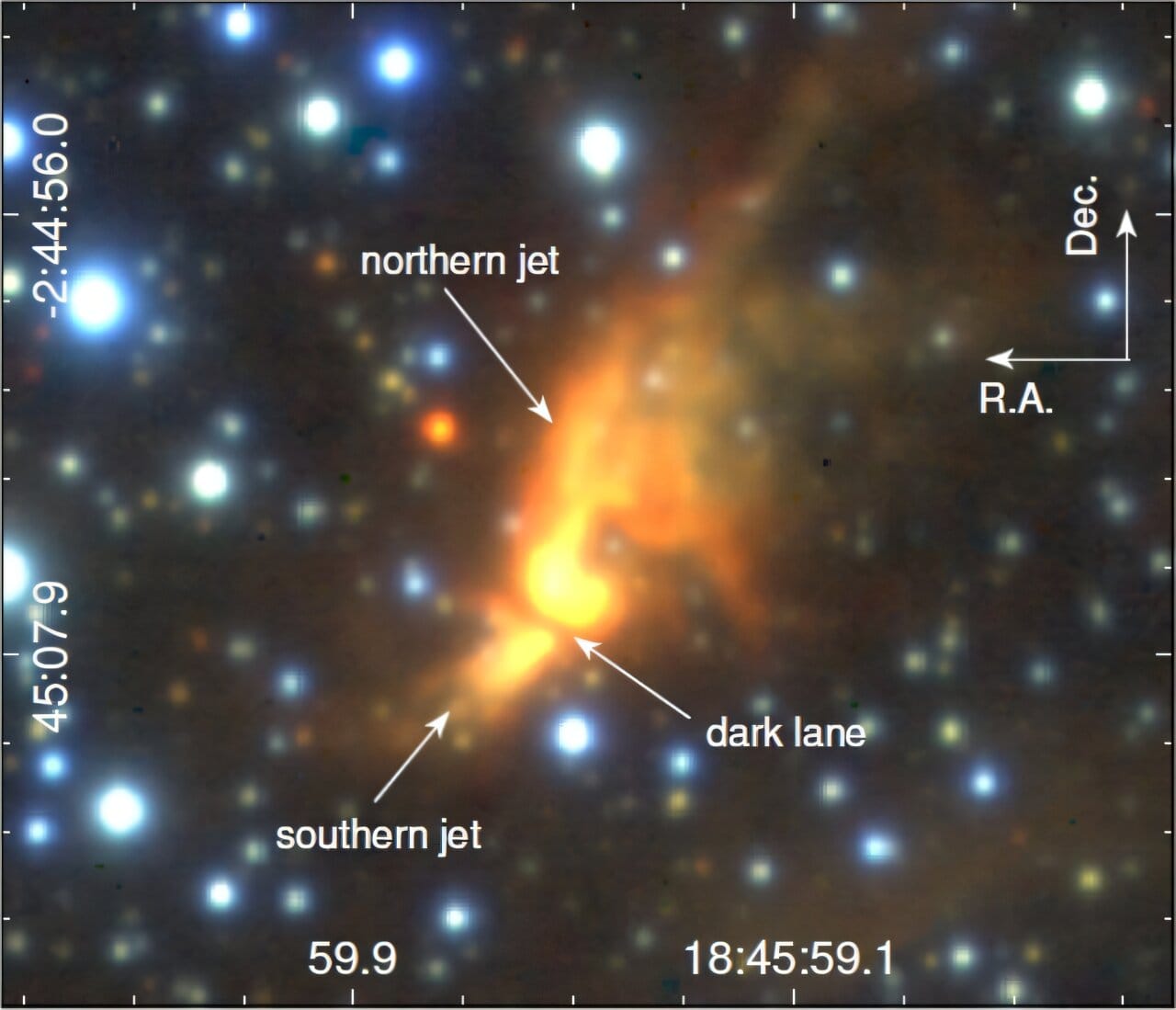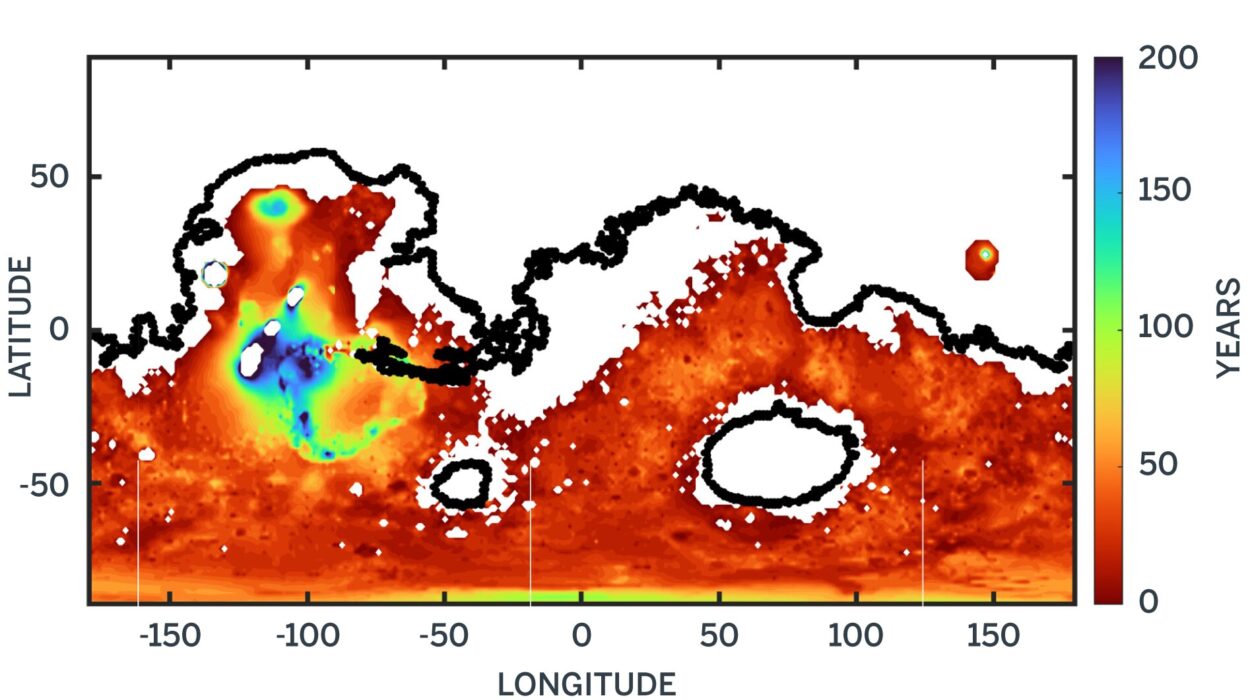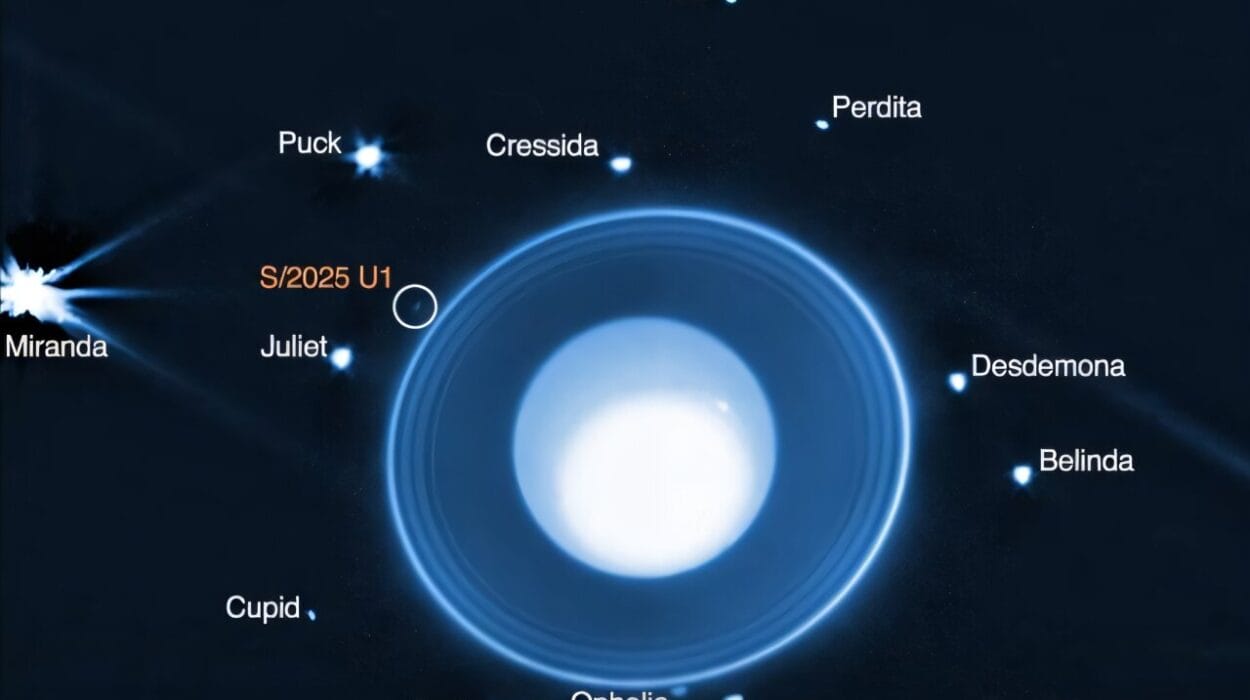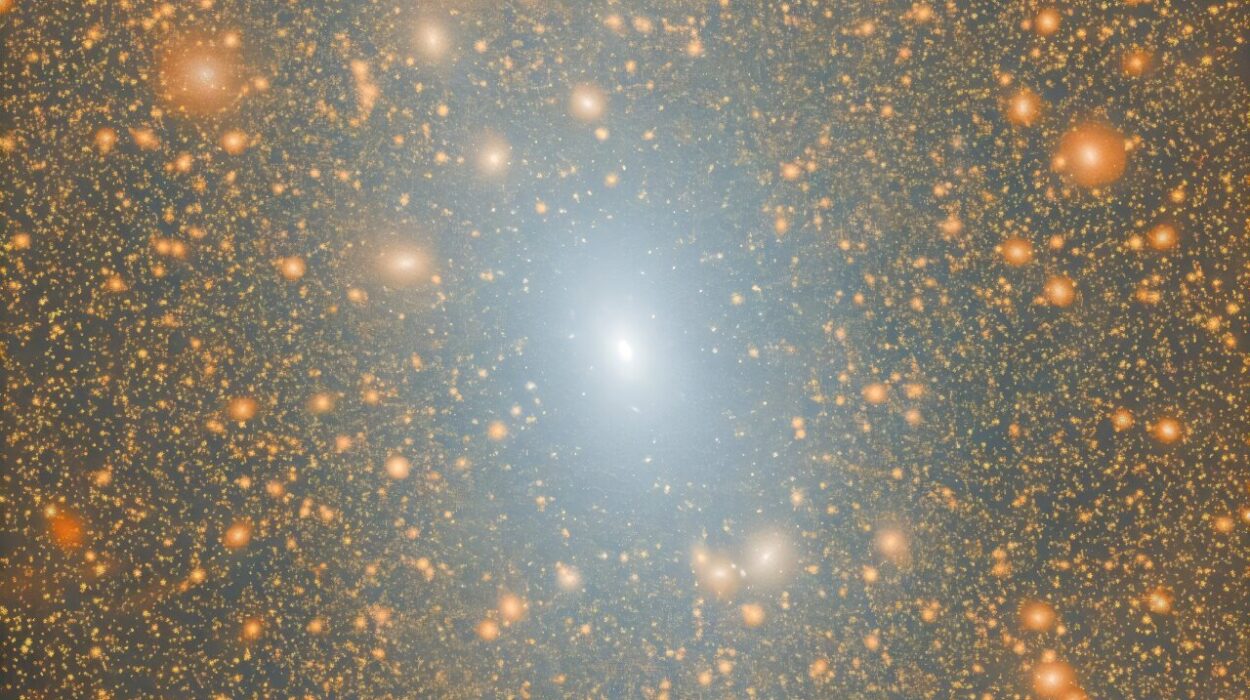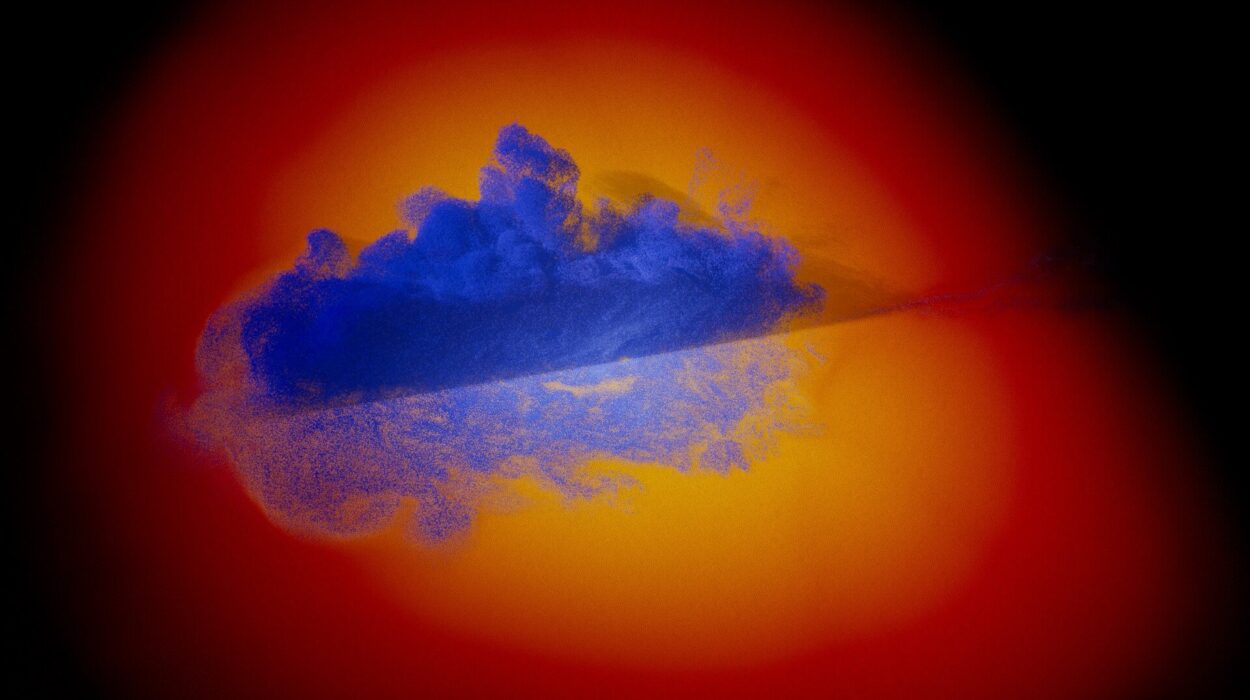The birth of a massive star is one of the most violent and spectacular events in the universe, yet ironically it is also one of the most difficult to witness. Unlike smaller stars such as our Sun, which take millions of years to fully form, massive stars condense and ignite astonishingly quickly—sometimes in as little as 10,000 years. Their furious energy output floods their surroundings with light, winds, and jets, while thick clouds of gas and dust smother them from view.
To astronomers on Earth, this is like trying to watch a firework explode while it’s still hidden inside its shell. But thanks to increasingly powerful telescopes and advanced techniques, glimpses into these early stages are becoming possible. And one such glimpse has just come from a collaboration between astronomers in Argentina and Spain, who turned their eyes toward a strange, massive young stellar object known as MYSO G29.862−0.0044, or simply YSO-G29.
Their results, published on August 13 on the arXiv preprint server, have brought new clarity—and fresh mystery—to this star’s complex life story.
Meet YSO-G29: A Star in the Making
YSO-G29 lies about 20,200 light years from Earth, nestled in the star-forming region G29.96-0.02. At this vast distance, what astronomers see is faint and hazy, obscured by the interstellar material in which the star is still cocooned.
Previous near-infrared images painted a curious picture: the object seemed to be made of two bright nebulous regions split by a dark lane, a structure suggesting the presence of a disk of material around a star, with jets blasting out of its poles. But something didn’t quite add up. The symmetry was off, and astronomers wondered if they were looking at one star, or two, or perhaps even an entire tangled nest of young stars forming together.
Was this an ordinary massive protostar with unusual features—or the sign of something even stranger?
The Power of a Closer Look
To tackle this mystery, the team led by Sergio Paron of the University of Buenos Aires decided to employ two powerful instruments: the Jansky Very Large Array (JVLA), a network of radio telescopes in New Mexico, and the Near-Infrared Integral Field Spectrometer (NIFS) at the Gemini North telescope in Hawaii.
This combination allowed them to probe both the large-scale environment and the fine structure of YSO-G29, peeling back layers of obscuring material to uncover what was happening at its heart.
And what they found was dramatic: molecular outflows—streams of gas hurtling away from the star at around 101 kilometers per second. Such outflows are the telltale signs of a young star actively accreting material, ejecting part of it as high-speed winds and jets.
In addition, the observations revealed a compact radio source—a small region of ionized gas located just 0.065 light years from the core. This could be an ionized jet blasting from a young protostar, or the beginnings of an HII region, where the intense radiation of a massive star strips electrons from hydrogen atoms.
A Case for Two Stars, Not One
The evidence pointed toward something unexpected: YSO-G29 might not be a single star at all, but a binary system.
The team suggested that one component could be a B1-type star, massive enough to generate an ultracompact HII region. The other might be a still-forming protostar that has not yet ignited nuclear fusion. Together, they could explain the strange features astronomers have been puzzling over for years.
If this is correct, then one star may have carved out a cavity in the surrounding gas with its winds, while the other’s powerful outflow partially disrupted that cavity, producing the asymmetric cone-like structures seen in near-infrared images. What once appeared to be a confusing mess of light and shadow now takes shape as the interplay of two siblings struggling to grow in the same cosmic womb.
Why YSO-G29 Matters
Understanding stars like YSO-G29 is not just an exercise in curiosity—it is a key to unraveling the story of the universe itself. Massive stars are rare but profoundly influential. They forge heavy elements in their fiery cores, shape their galaxies with radiation and winds, and end their lives in spectacular supernovae that seed future generations of stars and planets.
Yet, because they form so quickly and so deeply buried, the earliest stages of their lives remain one of the least understood chapters of stellar evolution. Each observation of a system like YSO-G29 adds another piece to the puzzle. Isolated protostars, binaries, or even small clusters—all of these could help explain why massive stars sometimes form alone and sometimes in groups, why their birth environments look so different, and how their violence impacts the galaxy around them.
A Window into the Hidden Universe
For now, YSO-G29 continues to shine faintly from across the Milky Way, a complex beacon wrapped in clouds. To the naked eye it is invisible, but through the eyes of telescopes it tells a story of struggle and transformation, of powerful forces carving and reshaping the space around them.
Astronomers will continue to study it with ever more sensitive instruments, perhaps even using the James Webb Space Telescope to pierce deeper into its dusty cocoon. Each new look may bring us closer to seeing not just a single star being born, but the intricate dance of companions that could change our understanding of stellar birth.
As the authors of the study concluded, those odd cone-like shapes in the near-infrared are not mere shadows—they are signs of creation, carved by jets and winds in a turbulent environment. In them, we glimpse the story of how stars wrestle their way into existence.
And somewhere, 20,000 light years away, YSO-G29 keeps growing, blazing toward the moment it will emerge as one of the galaxy’s giants.
More information: S. Paron et al, Revisiting G29.862-0.0044: a jet cavity disrupted by an outflow in a likely young stellar object wide binary system, arXiv (2025). DOI: 10.48550/arxiv.2508.10197
